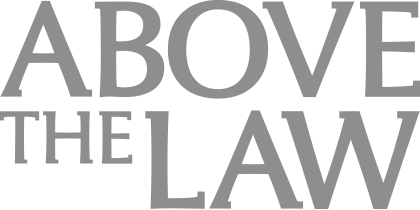How To Be Persuasive – A Guide For Lawyers
You begin to notice a pattern with the attorneys who are consistently good – they are very good persuaders, no matter what practice area they're in.
 When I was in law school and shortly thereafter, I was blessed to work for a firm that went to trial a lot, and we had the opportunity to work against some attorneys way out of our league. You begin to notice a pattern with the attorneys who are consistently good – they are hard workers, but they are also very good persuaders. Whether you do family law, employment class actions, business litigation, or personal injury, you have to be good at persuading. From writing persuasive motions to being persuasive at hearings and in trial, it permeates everything that litigators do. I’ve written briefly about this before, but here, I want to discuss what we can do to overcome our persuasion problem.
When I was in law school and shortly thereafter, I was blessed to work for a firm that went to trial a lot, and we had the opportunity to work against some attorneys way out of our league. You begin to notice a pattern with the attorneys who are consistently good – they are hard workers, but they are also very good persuaders. Whether you do family law, employment class actions, business litigation, or personal injury, you have to be good at persuading. From writing persuasive motions to being persuasive at hearings and in trial, it permeates everything that litigators do. I’ve written briefly about this before, but here, I want to discuss what we can do to overcome our persuasion problem.
Borrow From Professions That Are Better At This Than Lawyers
Marketing and sales are professions that understand better than anyone else that it’s not what you say, but how you say it. Some of the best books I’ve read about how to be a lawyer were not lawyer books at all, but pure marketing books. Being successful in marketing and sales relies heavily on cognitive science to find out ways to manipulate people into choosing one thing over another. Being a lawyer means getting judges or juries to choose me over the other guy. Having a great product makes it easier to sell it, but often, it’s the art of the sale that closes the deal. Same thing in law – being right helps, but that is only half of the battle. The part that lawyers often forget is the art of persuading others that you were right. There is a science to it and a deliberate way to deliver the message to sell your argument.

Law Firm Business Development Is More Than Relationship Building
Look also at the world of corporate storytelling. There’s a reason why Apple dominated the mobile device market. It’s one part product and one part Steve Jobs’s ability to be a corporate storyteller. Nancy Duarte gave this TED Talk about the patterns Steve Jobs used in his release events to present his products.
There’s a reason why people would give a standing ovation when he would finish talking about the features of an mp3 player. He would present information in a specific formula to evoke emotion and curiosity that actually made people stand up from their seats and clap.
Harvard Business Review has this to say about corporate storytelling:
Sponsored

Curbing Client And Talent Loss With Productivity Tech

Happy Lawyers, Better Results The Key To Thriving In Tough Times

Law Firm Business Development Is More Than Relationship Building
The other way to persuade people—and ultimately a much more powerful way—is by uniting an idea with an emotion. The best way to do that is by telling a compelling story. In a story, you not only weave a lot of information into the telling but you also arouse your listener’s emotions and energy. Persuading with a story is hard. Any intelligent person can sit down and make lists. It takes rationality but little creativity to design an argument using conventional rhetoric. But it demands vivid insight and storytelling skill to present an idea that packs enough emotional power to be memorable.
That is just as applicable to the boardroom as it is the courtroom.
Don’t Let Computers Stand In The Way
There’s no app for being a better storyteller. Sorry. I’ve written numerous times about the problems I have with the use of PowerPoint in trial. Josh Karton, a consultant who teaches litigators to use theater techniques to be more persuasive, and David Ball, a consultant who teaches lawyers how to organize arguments to get larger verdicts, discussed this in a podcast for the ABA Journal a few years ago. The whole podcast and transcript is here, but the key point is this:
David, I was going to say something about that. You said this great thing once, well many times, about don’t let — friends don’t let friends overuse PowerPoint….
You watch in a room, even at a seminar, when somebody’s using PowerPoint, and again I’m qualifying it, to introduce new things, it’s very different later on and very much easier to use but in an opening, you put up that new thought and people stare at it, and the dangerous thing that happens is not just that they’re out of contact with the attorney because they’re staring at a screen, but they now think they’ve got the gist of what you’re going to say so they tend to stop listening as carefully.
Sponsored


Generative AI at Work: Boosting e-Discovery Efficiency for Corporate Legal Teams
They are both very critical of using PowerPoint, but agree that it can be used effectively in certain circumstances, as long as you don’t over use it or misuse it. As someone who does a lot of work consulting with attorneys on the effective use of trial technology, I can say this is the key.
One thing I do when I am in court is track eye movement of jurors to see who is bored and who is receiving the information we are giving. In his book The Tipping Point: How Little Things Can Make a Big Difference (affiliate link), Malcolm Gladwell points out that tracking eye movement is one of the best ways of scientifically determining what information a listener is receiving. Try watching a movie with subtitles. You can focus on the performance or read the subtitles, but not both. If you are focusing on the performance, you are missing the subtitles. If you read the subtitles, you are missing parts of the performance. It’s probably not the intention of the director to make you choose between the two, just as it’s not the intention of the attorney to have the jury switch focus back and forth between the attorney’s story and bullet points on a screen. Bullet points might be a good way to convey information, but they detract from the emotion of the story, which results in poor persuasion.
Jeff Bennion is Of Counsel at Estey & Bomberger LLP, a plaintiffs’ law firm specializing in mass torts and catastrophic injuries. He serves as a member of the Board of Directors of San Diego’s plaintiffs’ trial lawyers association, Consumer Attorneys of San Diego. He is also the Education Chair and Executive Committee member of the State Bar of California’s Law Practice Management and Technology section. He is a member of the Advisory Council and instructor at UCSD’s Litigation Technology Management program. His opinions are his own. Follow him on Twitter here or on Facebook here, or contact him by email at [email protected].







